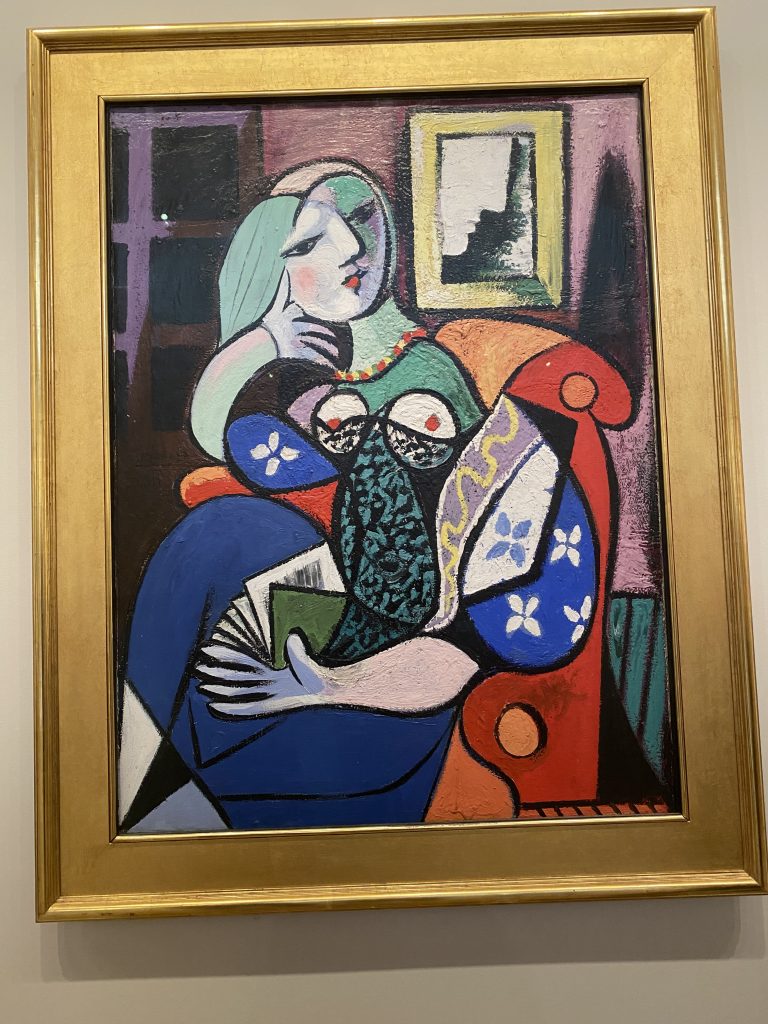
When I was visiting Los Angeles, I had the pleasure of seeing a collection of art consisting of the pieces of many renowned artists. I was particularly drawn to the creations of Picasso, and I believe this particular painting, Woman with a Book, represents Schiller’s aesthetic experience especially well. Picasso was one of the greatest artists of the 20th century, famous for greatly influencing the art movement known as Cubism. Cubism consisted of analyzing natural forms and reducing them into basic geometric parts. Picasso had an eclectic attitude to style, and while his pieces normally focused on one dominant approach, he often moved interchangeably between different art styles, such as Surrealism, throughout the course of his career. The woman of his focus, depicted in soft, disproportional shapes, and with an unnatural assortment of colors, provokes a feeling of melancholy, with her pensive gaze, open book, and head resting heavily on one hand. The head casts a prominent shadow on the back wall, making one who looks at this painting feel a sense of desolation. The expression on the woman’s face, along with the mostly cool palette, indicate serious and deep reflection. The emotions produced when one looks at this painting additionally inspire an intellectual response. When one looks at the strokes and the thickness of lines Picasso utilizes, one can visualize what his intentions of the painting were, and thus gain greater insight to his work of art. Thus, paintings are a great method of merging the sensual and intellectual in order to create Schiller’s aesthetic experience. Additionally, this painting can help us to be morally better. As an artist, Picasso is an example of committing to an absolute: loving an absolute quality of his subjects and sharing them through different styles of painting. When we view works of art such as this, we can appreciate Picasso’s commitment, and we can apply that commitment into our everyday lives, becoming inspired to follow a set of morals or standards to keep yourself accountable. Thus, Woman with a Book is a perfect example of Schiller’s aesthetic experience, blending the intellectual and sensual and inspiring individuals to become morally better.




